Opened 1913 Track gauge 1,372 mm (4 ft 6 in) Stations 32 | Website www.keio.co.jp Line length 37.9 km (23.55 mi) | |
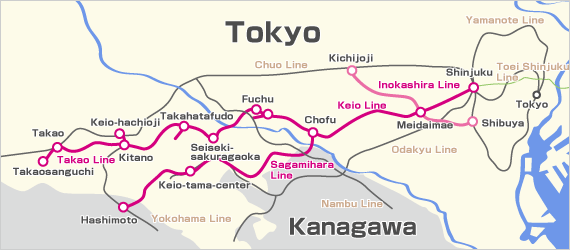 | ||
Daily ridership 1,349,238 (daily, 2010) | ||
The Keio Line (京王線, Keiō-sen) is a 37.9 km railway line in western Tokyo, Japan, owned by the private railway operator Keio Corporation. It connects Shinjuku, Tokyo, with the suburban city of Hachiōji. The Keio Line is part of a network with interchanges and through running to other lines of Keio Corporation: the Keio New Line, Keio Sagamihara Line, the Keibajo Line, the Dobutsuen Line, the Takao Line, and the 1,067 mm (3 ft 6 in) gauge Keio Inokashira Line.
Contents

Services
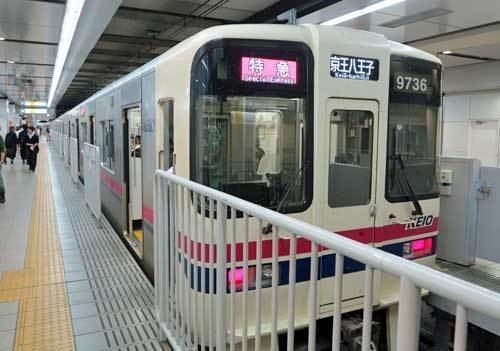
Five types of rapid services are operated on the Keiō Line, along with local trains. Destinations are from Shinjuku unless otherwise indicated. English abbreviations are tentative for this article.
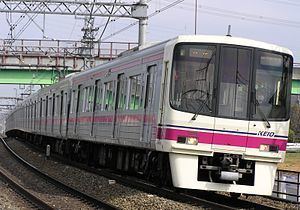
Stations
Legend:
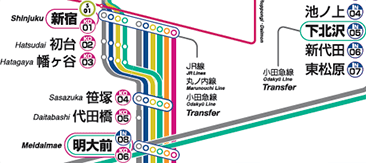
Events at stations marked with a "◇" symbol for which trains make special seasonal stops:
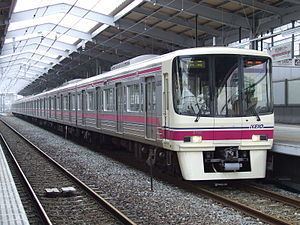
History
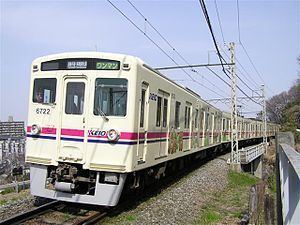
The Shinjuku to Chōfu section opened in 1913 as a 1,372 mm (4 ft 6 in) gauge line electrified at 600 V DC, and was progressively extended in both directions so that the line connected Shinjuku and Fuchu in 1916. The Sasazuka to Fuchu section was double-tracked between 1920 and 1923.
The extension to Higashi-Hachiōji (now Keiō-Hachiōji) was completed by a related company, Gyokunan Electric Railway, in 1925. This electrified line was built to the Japanese standard narrow gauge of 1,067 mm (3 ft 6 in) in an attempt to seek a government subsidy, and so trains from each railway could not operate on the other's tracks. The subsidy application was rejected on the basis that the line competed with the Japanese Government Railways (JGR) Chuo Main Line, and so the Gyokunan Electric Railway merged with the Keio Electric Railway Co., the line was regauged to 1,372 mm, and operation of trains from Shinjuku to Higashi-Hachiōji commenced in 1928.
The Fuchu to Nakagawara and Seiseki-Sakuragaoka to Kitano sections were double-tracked in 1929. In 1963, the Shinjuku underground station, including double-tracking from Sasazuka, commenced service, and the overhead line voltage was increased to 1,500 V DC. The Nakagawara to Seiseki-Sakuragaoka section was double-tracked in 1964. The Kitano to Keio-Hachioji section was double-tracked in 1970, and the relocation of the terminal station underground was completed in 1989.
From the start of the revised timetable introduced on 25 September 2015, Semi Special Express services were also to stop at Sasazuka and Chitose-Karasuyama stations, and Semi Express services will also stop at Sengawa Station.
